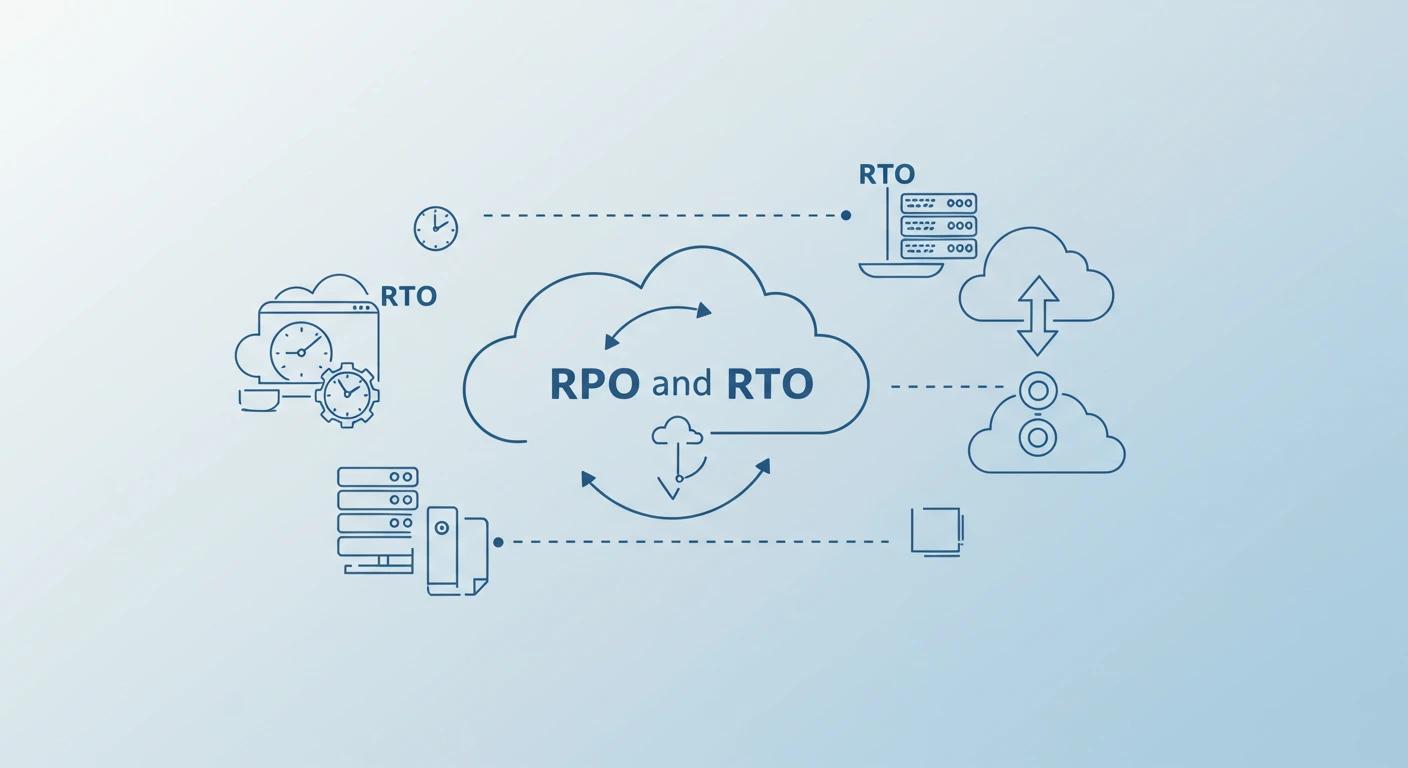
In today’s digital landscape, businesses rely heavily on technology to operate efficiently and serve customers. However, increased reliance on digital systems can lead to unexpected disruptions in business operations. Customers expect real-time, fast, and reliable transactions. Any digital issues can negatively impact your business continuity plan, resulting in decreased efficiency, financial losses, and loss of customer trust.
Thinking about future disasters can feel overwhelming. After all, disasters are often uncertain. However, Cloud Disaster Recovery (CDR) has emerged as a powerful data protection solution, using cloud infrastructure to secure critical data, ensure continuous service, and protect business processes.
Let’s discuss two essential terms in Cloud Disaster Recovery that support a strong business continuity plan: RPO and RTO. What do they mean, and why are they important?
What are RTO and RPO in Cloud Disaster Recovery?
Recovery Point Objective
Recovery Point Objective defines the maximum amount of data a business can afford to lose in the event of a disruption. It answers the question: “How much data loss is acceptable?”
Understanding your RPO helps determine how frequently backups should occur and which data recovery strategies to implement. The lower the RPO, the more frequent and granular the backups need to be to limit the amount of data loss.
Example:
Imagine an e-commerce website. If your RPO is set to 1 hour, the system must be able to recover all data created up to one hour before the incident. Any critical data generated within that window could be lost.
Recovery Time Objective
Recovery Time Objective refers to the amount of time a system or application can be offline before it causes significant disruption. It answers: “How quickly should recovery be completed?”
RTO helps businesses allocate resources to ensure a swift recovery and maintain essential business operations. A lower RTO requires more robust systems and investments to achieve near real-time recovery.
Example:
Consider an online banking platform. If the RTO is 15 minutes, your disater recovery strategy must bring the service back online within that time to avoid violating recovery objectives.
Key Differences between Recovery Time Objective and Recovery Point Objective
- Priority: RPO is about the amount of data loss, while RTO is about the amount of time needed to resume services.
- Cost: Meeting a strict RTO typically incurs higher costs, as it covers entire infrastructure readiness, compared to RPO, which mainly concerns data protection and backups.
- Automation: Scheduled data backups can automate RPOs efficiently. RTOs involve wider IT and business process coordination, often requiring orchestration of multiple systems.
- Calculation Variables: RPO calculations are relatively straightforward. RTO calculations depend on several factors, including restoration times, infrastructure readiness, and event timing.

Best Practices for RPO and RTO
Assess Application Criticality
Identify mission-critical systems and prioritize them in your business continuity plan. Different applications may require different recovery objectives.
Regular Testing
Validate RTO and RPO targets by testing your DR plan periodically and refining the process by identifying bottlenecks.
Automate Recovery
Leverage cloud-native tools to automate failover and recovery processes. This minimizes downtime and aligns with real-time availability expectations.
Document Everything
Document recovery time objective, recovery point objective, and recovery procedures, and ensure all stakeholders are aware of the plan.
Conclusion
Using the cloud for disaster recovery allows businesses to maintain resilience and minimize risk. By defining your Recovery Point Objective and Recovery Time Objective, you can control how much data and time your business can afford to lose during an incident. These recovery objectives form the backbone of a successful business continuity plan, ensuring critical business operations are maintained even in the face of disruption.
If you want to implement Cloud Disaster Recovery for your organization or need expert help getting started, contact Wanclouds via our website or one of our sales representatives at [email protected].